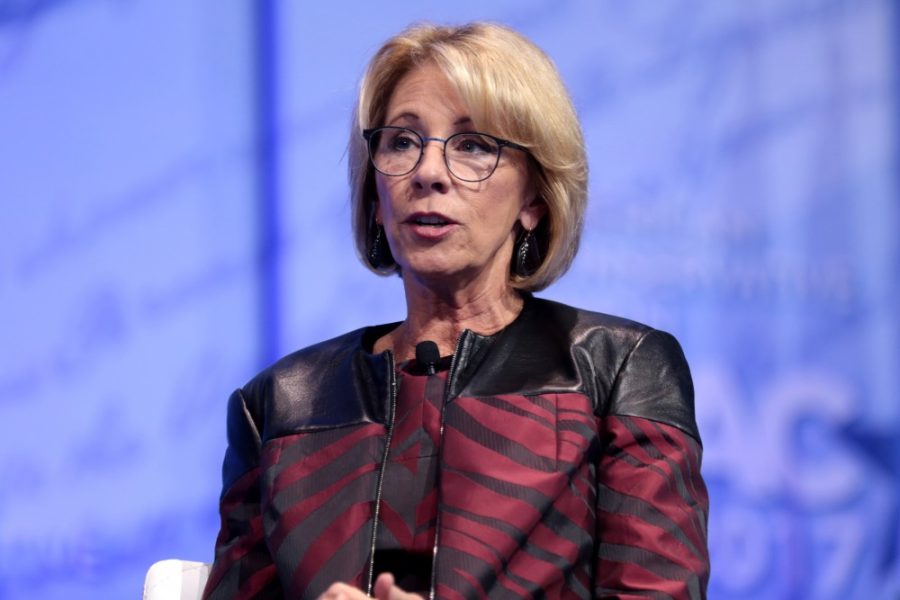Budget cuts are not the solution to schools turning out poor results. What these schools need is a system of allocating where the money is spent to benefit their students.
Extra money does help these schools when they spend money on the right resources. The best way to do that is to invest in staff members who will provide a better learning environment. With extra money, they can hire and pay more dedicated individuals, train them better and have jobs for other out-of-classroom resources.
Betsy DeVos, the United States secretary of education, said funneling money into schools will not solve its problems.
DeVos said she believes the extra grants given to underperforming schools do not help to improve the school’s results. These grants were started under the Bush administration but were raised during the Obama administration.
DeVos has referenced a report from the Department of Education, which was published in the final days of the Obama Administration.
The report states the extra $7 billion Obama poured into under-performing schools “had no significant impact on math or reading test scores, high school graduation or college enrollment.”
Related: Betsy DeVos and questions of qualifications
The grants from the Bush and Obama administrations may not have had the results they were hoping for, but the problem that the money was not spent properly in the past still remains.
The Trump administration’s budget outline has the education department taking a $9 billion decrease, which cuts 13.5 percent of their budget.
A recent article from NPR examines several studies and concludes that, although extra money does not always produce the higher test scores that they are hoping for, it does in other schools when it’s spent on the right programs.
The last thing these already-poor schools and inferior education systems in the U.S. need is a budget cut of the proportion that Trump is imposing. These schools may not always show the results right away, but that does not mean the money is not working. In many of these schools, poverty is a problem.
Many of these schools in high-poverty districts are allotted money to first solve problems stemming from poverty. Many students take advantage of district-supported free lunch programs. However, even though these children recieve meals at school, there is no sign it is directly related to test scores.
Related: Cutting arts and public broadcast funding is a tragedy
Money first has to go to helping with problems like this, which does not directly cause a rise in test scores like other methods would.
In many of these cases, school districts utilize government-funded programs designed to help these problems.
These programs that help these poorer schools do produce results. An NPR article about school funding highlights the town of Goshen, Indiana, which has a population that is over half Latino.
Extra funding in this district goes toward an English language program that employs extra teachers and counselors. This program has given these students a safe space to learn and speak English so they feel more confident speaking in their normal classrooms. The program resulted in an increase in test scores until Indiana decided to make their school budgets equal regardless of the needs of the school.
A district-wide budget cut of $3 million decreased the English language program funding by a third. The same article discusses Revere, which is north of Boston.
Revere spent its budget increase on people, meaning it hired and administered better training to teachers, as well as employment to faculty that help as other resources outside of the classroom. This 80-percent impoverished school now sees 90 percent of its graduates going to post-secondary school, compared to its former 70 percent.
A better system that allocates where schools spend money will help schools get better results from their students. Focusing funding on the staff in schools will in turn help students get the support they need.
Follow Claudia Drace on Twitter









